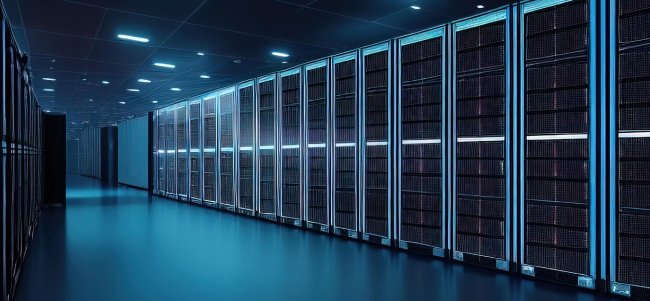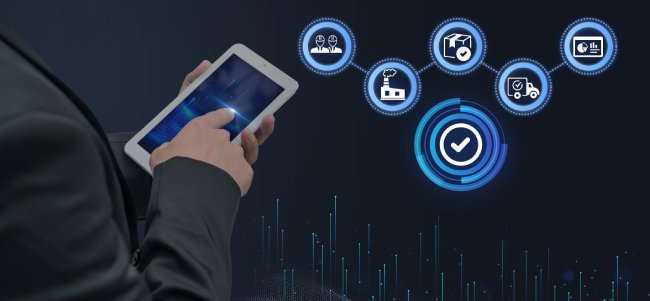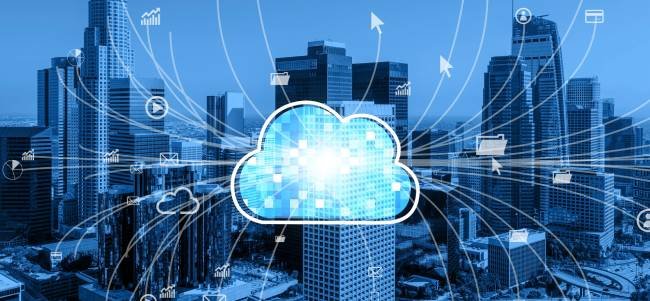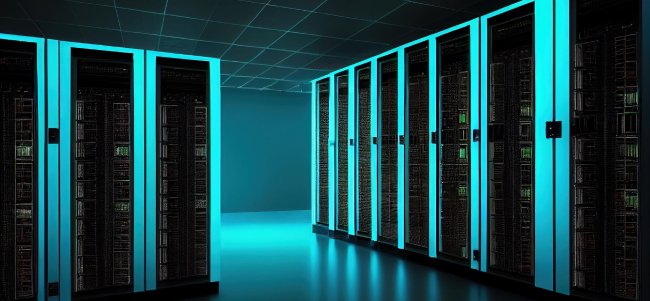Managed IT Support

Help Desk Support
- First-line support: Handling initial inquiries, troubleshooting, and ticket management.
- Escalation support: Handling more complex issues that require specialized expertise.

Remote Monitoring and Management (RMM)
- Monitoring of servers, networks, endpoints (computers, mobile devices), and other IT infrastructure components.
- Proactive maintenance to identify and resolve issues before they cause downtime.

Network Management
- Managing routers, switches, firewalls, and ensuring network security and performance.
- Configuration management and optimization.

Infrastructure Management
- Managing servers (physical and virtual), storage systems, and data centers.
- Capacity planning, performance tuning, and backup management.

Patch Management
- Managing and deploying software patches and updates across all IT systems to ensure security and stability.

Application Management
- Managing business-critical applications, including installation, configuration, updates, and troubleshooting.

Mobile Device Management (MDM)
- Managing mobile devices (smartphones, tablets) used within the organization, including security, application deployment, and remote wipe capabilities.

Security Management
- Implementing and managing cybersecurity measures such as firewalls, antivirus software, intrusion detection/prevention systems (IDS/IPS), and data encryption.
- Conducting security audits and vulnerability assessments.

Cloud Services Management
- Managing cloud infrastructure (IaaS), platform services (PaaS), and software as a service (SaaS).
- Ensuring cloud security, cost optimization, and performance monitoring.

Data Backup and Disaster Recovery
- Implementing backup solutions to protect against data loss.
- Planning and testing disaster recovery processes to minimize downtime in case of emergencies.

On-Site End User Support
- Desktops/Laptops/Mobile Device: Assisting with setup, configuration, and troubleshooting of computers, including operating system issues, performance optimizations, and connectivity problems.
- Field Technicians: Dispatching IT personnel to users' locations when issues cannot be resolved remotely or require physical inspection or repair of hardware components.
- Hardware Replacement: Swapping out faulty hardware components such as keyboards, mice, monitors, or peripherals that cannot be resolved through remote support.

IT Asset Management
- Tracking and managing IT assets throughout their lifecycle, including procurement, deployment, maintenance, and disposal.

Database Administration
- Providing complete database administration services comprising of everything required to manage a database and making it available as required.

Vendor Management
- Coordinating with third-party vendors and service providers to ensure seamless integration and support for IT services and solutions.

IT Consulting and Strategic Planning
- Providing guidance on IT strategy aligned with business goals.
- Technology roadmap development and IT infrastructure upgrades.

Compliance and Regulatory Support
- Ensuring IT systems and practices comply with relevant regulations and standards (e.g., GDPR, HIPAA).

User Training and Support
- Providing training sessions and support to end-users on IT systems and best practices.

Reporting and Documentation
- Generating regular reports on IT performance, system health, and security.
- Maintaining documentation of IT systems, configurations, and processes.

Business Continuity Planning (BCP)
- Developing and maintaining strategies and plans to ensure business operations can continue in the event of a major disruption or disaster.

Regulatory Compliance Audits
- Conducting audits and assessments to ensure adherence to industry regulations, standards, and compliance requirements.

Feedback and Continuous Improvement
- User Satisfaction Surveys: Soliciting feedback from users to assess the quality of IT support services provided and identify areas for improvement.
- Establishing and managing SLAs with internal stakeholders or external clients to ensure service delivery meets agreed-upon performance metrics and standards.
Managed IT Support

Help Desk Support
- First-line support: Handling initial inquiries, troubleshooting, and ticket management.
- Escalation support: Handling more complex issues that require specialized expertise.

Remote Monitoring and Management (RMM)
- Monitoring of servers, networks, endpoints (computers, mobile devices), and other IT infrastructure components.
- Proactive maintenance to identify and resolve issues before they cause downtime.

Network Management
- Managing routers, switches, firewalls, and ensuring network security and performance.
- Configuration management and optimization.

Infrastructure Management
- Managing servers (physical and virtual), storage systems, and data centers.
- Capacity planning, performance tuning, and backup management.

Patch Management
- Managing and deploying software patches and updates across all IT systems to ensure security and stability.

Application Management
- Managing business-critical applications, including installation, configuration, updates, and troubleshooting.

Mobile Device Management (MDM)
- Managing mobile devices (smartphones, tablets) used within the organization, including security, application deployment, and remote wipe capabilities.

Security Management
- Implementing and managing cybersecurity measures such as firewalls, antivirus software, intrusion detection/prevention systems (IDS/IPS), and data encryption.
- Conducting security audits and vulnerability assessments.

Cloud Services Management
- Managing cloud infrastructure (IaaS), platform services (PaaS), and software as a service (SaaS).
- Ensuring cloud security, cost optimization, and performance monitoring.

Data Backup and Disaster Recovery
- Implementing backup solutions to protect against data loss.
- Planning and testing disaster recovery processes to minimize downtime in case of emergencies.

On-Site End User Support
- Desktops/Laptops/Mobile Device: Assisting with setup, configuration, and troubleshooting of computers, including operating system issues, performance optimizations, and connectivity problems.
- Field Technicians: Dispatching IT personnel to users' locations when issues cannot be resolved remotely or require physical inspection or repair of hardware components.
- Hardware Replacement: Swapping out faulty hardware components such as keyboards, mice, monitors, or peripherals that cannot be resolved through remote support.

IT Asset Management
- Tracking and managing IT assets throughout their lifecycle, including procurement, deployment, maintenance, and disposal.

Database Administration
- Providing complete database administration services comprising of everything required to manage a database and making it available as required.

Vendor Management
- Coordinating with third-party vendors and service providers to ensure seamless integration and support for IT services and solutions.

IT Consulting and Strategic Planning
- Providing guidance on IT strategy aligned with business goals.
- Technology roadmap development and IT infrastructure upgrades.

Compliance and Regulatory Support
- Ensuring IT systems and practices comply with relevant regulations and standards (e.g., GDPR, HIPAA).

User Training and Support
- Providing training sessions and support to end-users on IT systems and best practices.

Reporting and Documentation
- Generating regular reports on IT performance, system health, and security.
- Maintaining documentation of IT systems, configurations, and processes.

Business Continuity Planning (BCP)
- Developing and maintaining strategies and plans to ensure business operations can continue in the event of a major disruption or disaster.

Regulatory Compliance Audits
- Conducting audits and assessments to ensure adherence to industry regulations, standards, and compliance requirements.

Feedback and Continuous Improvement
- User Satisfaction Surveys: Soliciting feedback from users to assess the quality of IT support services provided and identify areas for improvement.
- Establishing and managing SLAs with internal stakeholders or external clients to ensure service delivery meets agreed-upon performance metrics and standards.

Regulatory Compliance Audits
- Conducting audits and assessments to ensure adherence to industry regulations, standards, and compliance requirements.

SLA Based Managed Services

End User Management

Hardware Management

Service Desk Management

Data Center Management

Server Management

Network Management

Asset Management

Application Management

SLA Based Managed Services

End User Management

Hardware Management

Data Center Management

Service Desk Management

Server
Management

Network Management

Asset Management

Application Management

AMC of Surveillance, AV Devices & NON IT Devices

Data Center Passive and Electrical Maintenance

Media Marketing
Far Far Away, Behind The Word Mountains, Far From The And Consonantia,...

Seo Optimizations
Far Far Away, Behind The Word Mountains, Far From The And Consonantia,...

Market Research
Far Far Away, Behind The Word Mountains, Far From The And Consonantia,...

Web Design
Far Far Away, Behind The Word Mountains, Far From The And Consonantia,...
